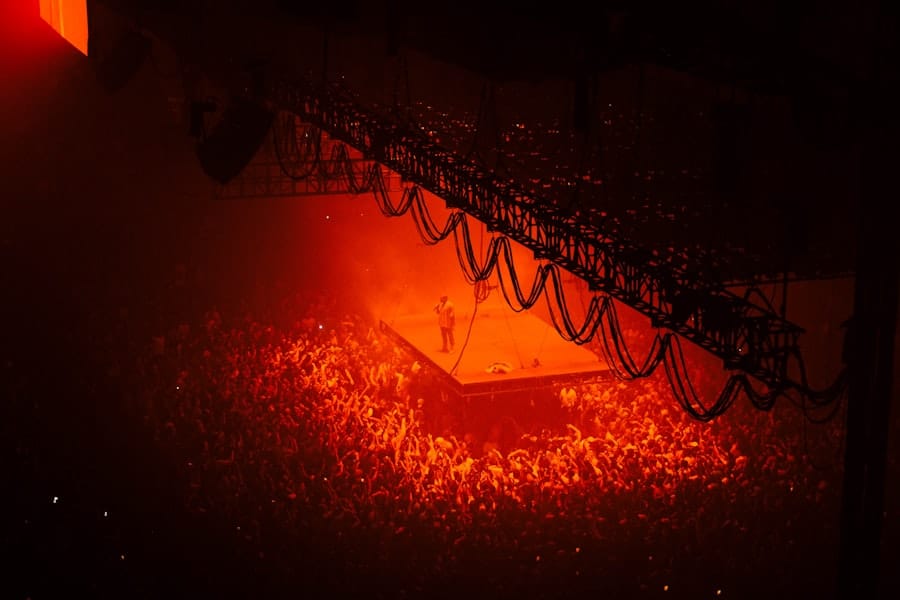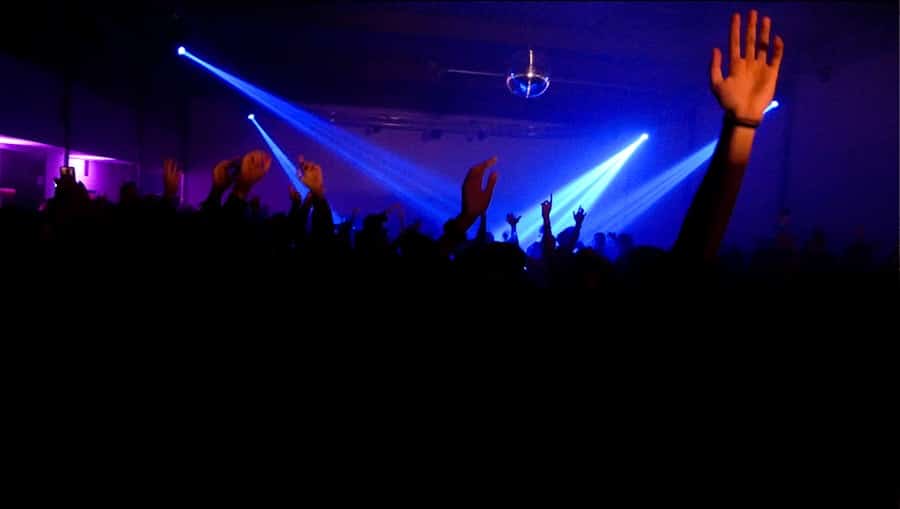Virtual reality (VR) concerts have emerged as a groundbreaking innovation in the music industry, transforming the way audiences experience live performances. By leveraging advanced technology, VR concerts create immersive environments that allow fans to engage with their favorite artists in ways that were previously unimaginable. This shift towards virtual experiences has been accelerated by the global pandemic, which forced many live events to be canceled or postponed.
As a result, artists and promoters began exploring alternative platforms to connect with audiences, leading to the rise of VR concerts as a viable and exciting option. The concept of VR concerts is not merely about watching a performance through a headset; it encompasses a multi-sensory experience that can include interactive elements, 3D visuals, and spatial audio. Fans can feel as though they are standing front row at a concert, surrounded by other attendees, even if they are physically miles apart.
This technology not only enhances the viewing experience but also democratizes access to live music, allowing individuals from various geographical locations to participate in events that they might not have been able to attend otherwise. As the technology continues to evolve, so too does the potential for VR concerts to redefine the landscape of live music.
Key Takeaways
- VR concerts offer an immersive and interactive experience for music fans, allowing them to feel like they are attending a live concert from the comfort of their own homes.
- VR concerts have the potential to revolutionize music consumption by providing a more accessible and convenient way for fans to experience live music performances.
- The evolution of live music experiences through VR has the potential to create new opportunities for artists to connect with their fans and expand their reach globally.
- While VR concerts present challenges such as technical limitations and the need for artists to adapt to new performance formats, they also offer opportunities for artists to innovate and engage with fans in unique ways.
- The future of VR concerts in the music industry looks promising, with advancements in technology enhancing the overall concert experience and opening up new possibilities for artists and fans alike.
The Impact of VR Concerts on Music Consumption
The advent of VR concerts has significantly altered music consumption patterns, shifting the focus from traditional live performances to virtual experiences. This transformation is evident in how fans engage with music and artists. With VR concerts, listeners can enjoy a more personalized experience, choosing their vantage point and interacting with the performance in real-time.
This level of engagement fosters a deeper connection between the artist and the audience, as fans can feel more involved in the performance rather than being passive observers. Moreover, VR concerts have the potential to reshape revenue models within the music industry. Traditional concert ticket sales often come with limitations such as venue capacity and geographical constraints.
In contrast, VR concerts can accommodate thousands of viewers simultaneously, creating new opportunities for monetization through ticket sales, merchandise, and virtual meet-and-greets.
The Evolution of Live Music Experiences through VR
The evolution of live music experiences through VR has been marked by a series of technological advancements that have enhanced the quality and accessibility of virtual performances. Early attempts at virtual concerts were often rudimentary, relying on basic streaming technology that failed to capture the essence of a live show. However, as VR technology has matured, so too have the experiences it offers.
High-definition visuals, realistic soundscapes, and interactive elements have become standard features in many VR concerts, creating an environment that closely mimics the energy of a live performance. One notable example of this evolution is the collaboration between major artists and tech companies to produce high-quality VR concerts. For instance, Travis Scott’s virtual concert within the popular video game Fortnite attracted millions of viewers and showcased how gaming platforms can serve as venues for live music.
As more artists embrace VR technology, we can expect to see increasingly sophisticated productions that push the boundaries of what is possible in live music.
The Challenges and Opportunities of VR Concerts for Artists
While VR concerts present numerous opportunities for artists to connect with their fans and expand their reach, they also come with a unique set of challenges. One significant hurdle is the initial investment required to produce high-quality virtual performances. Artists may need to collaborate with specialized production teams and invest in advanced technology to create an immersive experience that meets audience expectations.
This financial barrier can be particularly daunting for emerging artists who may lack the resources or industry connections to navigate the complexities of VR production. Additionally, there is the challenge of audience engagement in a virtual setting. Unlike traditional concerts where artists can feed off the energy of a live crowd, VR concerts require performers to adapt their stage presence and delivery to a digital environment.
This shift necessitates new skills and approaches to performance that some artists may find difficult to master. However, those who successfully embrace these challenges can reap significant rewards, including increased visibility and fan loyalty. By leveraging VR technology effectively, artists can create memorable experiences that resonate with audiences long after the concert has ended.
The Future of VR Concerts in the Music Industry
As we look toward the future of VR concerts in the music industry, it is clear that this trend is poised for continued growth and innovation. The increasing accessibility of VR technology—through affordable headsets and improved internet connectivity—will likely lead to a broader audience base for virtual performances. As more fans become comfortable with engaging in virtual environments, artists will have greater opportunities to reach diverse demographics and expand their fan base beyond geographical limitations.
Moreover, advancements in artificial intelligence (AI) and machine learning could further enhance the VR concert experience by personalizing content based on individual preferences. For instance, AI algorithms could analyze user behavior to curate setlists or suggest upcoming performances that align with a fan’s musical tastes. This level of customization could lead to more meaningful interactions between artists and their audiences, fostering a sense of community within the virtual space.
As technology continues to evolve, we can expect VR concerts to become an integral part of the music industry landscape.
The Role of Technology in Enhancing VR Concert Experiences
Technology plays a pivotal role in enhancing VR concert experiences, enabling artists and producers to create captivating environments that engage audiences on multiple levels. One key aspect is spatial audio technology, which allows sound to be positioned in three-dimensional space, creating an immersive auditory experience that mimics real-life acoustics. This innovation enables fans to perceive sound from different directions, enhancing their sense of presence within the virtual concert space.
In addition to audio advancements, visual technology has also made significant strides in recent years. High-resolution graphics and 3D modeling allow for stunning visual effects that can transport audiences into fantastical worlds or replicate iconic concert venues. For example, during a VR concert featuring a holographic performance by a deceased artist like Tupac Shakur at Coachella 2012, fans were able to experience a lifelike rendition that blurred the lines between reality and digital artistry.
Such technological innovations not only elevate the overall experience but also challenge traditional notions of what constitutes a live performance.
The Potential for VR Concerts to Reach Global Audiences
One of the most compelling aspects of VR concerts is their potential to reach global audiences without the constraints imposed by physical venues or geographical barriers. Traditional concerts often limit attendance based on location and capacity; however, VR technology allows fans from around the world to participate in real-time performances from the comfort of their homes. This democratization of access means that fans who may have never had the opportunity to see their favorite artists live can now do so virtually.
The global reach of VR concerts also opens up new avenues for cultural exchange and collaboration among artists from different backgrounds. For instance, an artist from South America could perform alongside musicians from Asia or Europe in a shared virtual space, creating unique cross-cultural experiences that celebrate diversity in music. This potential for collaboration not only enriches the artistic landscape but also fosters connections among fans worldwide, creating a sense of unity through shared musical experiences.
The Social and Cultural Implications of VR Concerts
The rise of VR concerts carries significant social and cultural implications that extend beyond mere entertainment value. As these virtual experiences become more mainstream, they challenge traditional notions of community and connection within the music industry. Fans who may feel isolated or disconnected from local music scenes can find solace in virtual environments where they can interact with like-minded individuals from around the globe.
This sense of belonging can be particularly important for marginalized communities who may struggle to find representation in mainstream music venues. Furthermore, VR concerts have the potential to reshape cultural narratives by providing platforms for underrepresented artists and genres. By breaking down geographical barriers, these virtual performances can spotlight diverse voices that might otherwise go unnoticed in traditional concert settings.
As audiences engage with a wider array of musical styles and cultural expressions through VR technology, they contribute to a richer tapestry of global music culture that celebrates inclusivity and innovation. In conclusion, while there are challenges associated with this new frontier in live music experiences, the opportunities presented by VR concerts are vast and transformative. As technology continues to advance and artists embrace these innovative platforms, we can anticipate a future where virtual performances play an integral role in shaping how we consume and connect with music on a global scale.
In the rapidly evolving music industry, the integration of technology has opened up new avenues for artists and fans alike. One such innovation is the rise of VR concerts, which offer immersive experiences that transcend traditional live performances. A related article, “Unlock a New World of Possibilities with Samsung Galaxy Z Fold4,” explores how cutting-edge technology, like the Samsung Galaxy Z Fold4, can enhance these virtual experiences. The article delves into the device’s capabilities, which can support high-quality VR content, making it a valuable tool for both creators and consumers in the music industry.
FAQs
What are VR concerts?
VR concerts are live music performances that are experienced through virtual reality technology. Viewers can wear VR headsets to immerse themselves in a virtual environment where they can watch and interact with the concert as if they were physically present.
How do VR concerts work?
VR concerts work by using 360-degree cameras and audio equipment to capture live performances. The footage is then streamed to VR headsets, allowing viewers to feel like they are attending the concert in person. Some VR concerts also incorporate interactive elements, such as virtual avatars and social features.
What is the role of VR concerts in the music industry?
VR concerts have the potential to revolutionize the music industry by providing a new way for artists to connect with their fans and generate revenue. They offer a unique and immersive concert experience that can reach a global audience, regardless of geographical location.
What are the benefits of VR concerts for artists and fans?
For artists, VR concerts offer a new revenue stream and the ability to reach a wider audience. They also provide a way to engage with fans in a more intimate and interactive manner. For fans, VR concerts offer the opportunity to experience live music in a unique and immersive way, without the limitations of physical venues.
Are VR concerts becoming more popular?
Yes, VR concerts are gaining popularity as technology continues to advance and more artists and fans embrace the concept. The COVID-19 pandemic also accelerated the adoption of VR concerts as a way to experience live music while adhering to social distancing guidelines.



